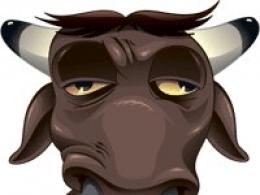Physiographic location of Eurasia. Coastline Features
Eurasia is the largest continent on the globe. It occupies 1/3 of the entire landmass of the planet. The enormous size and complex structure of the earth's crust create uniquely diverse natural conditions.
Geographical records of the mainland
In Eurasia there is the highest mountain on Earth - Chomolungma (Everest), the largest mountain system in area - Tibet, the largest peninsula - the Arabian, the largest geographical area - Siberia, the lowest point of land - the Dead Sea depression.
Eurasia is the highest continent on Earth, its average height is about 830 meters. Elevation fluctuations are particularly large in Eurasia. The difference between the Dead Sea depression and the highest peaks of the Himalayas exceeds 9 kilometers.
The relief of Eurasia is extremely diverse; it contains some of the largest plains and mountain systems in the world: the East European Plain, the West Siberian Plain, and the Tibetan Plateau.
Eurasia contains the highest mountains on Earth - the Himalayas, with the highest peak in the world - Mount Chomolungma.

Rice. 4. Chomolungma
The Eurasian mountain systems of the Himalayas, Tibet, Hindu Kush, Pamir, Tien Shan, etc. form the largest mountain region on Earth. This part of Eurasia is characterized by great activity of the earth's crust.

Rice. 5. Relief of Eurasia ()
How can we explain the diversity of the relief of Eurasia? This is the result of the mutual action of internal and external relief-forming processes.
The territory of Eurasia, like a mosaic, is made up of platform blocks connected by folded belts of different ages. The most ancient are the East European, Siberian, Sino-Korean and South China platforms.
Plains and mountains, created by internal forces, constantly change their relief under the influence of external forces.
Landforms created by rivers are ubiquitous on the mainland: mountain slopes are dissected by gorges and canyons, plateau surfaces are divided by terraces.
The largest plains of Eurasia - the Great Chinese, Indo-Gangetic, Mesopotamian, and West Siberian - are composed of river sediments - alluvium.

Rice. 6. Mesopotamian lowland
In the southeast and southwest of Eurasia - the Indochina Peninsula, in the Mediterranean, and in the Caucasus, karst forms are widespread. The limestones that make up the surface are dissolved by water seeping into the rock mass. And bottomless abysses appear on the surface, and deep underground - caves, blocked by palisades of stalagmites and stalactites.
Homework
Read § 43. Do practical work:
In a contour map, using the atlas map and the lecture text, plot the objects of the continental coastline.
Bibliography
MainI:
Geography. Land and people. 7th grade: textbook for general education. uch. / A.P. Kuznetsov, L.E. Savelyeva, V.P. Dronov. Series "Spheres". - M.: Education, 2011. Geography. Land and people. 7th grade: atlas. Series "Spheres". - M.: Education, 2011.
Additional:
1. Maksimov N.A. Behind the pages of a geography textbook. - M.: Enlightenment.
Literature for preparing for the State Exam and the Unified State Exam
1. Tests. Geography. 6-10 grades: Educational and methodological manual / A. A. Letyagin. - M.: LLC "Agency "KRPA "Olympus": Astrel, AST, 2001. - 284 p.
2. Textbook on geography. Tests and practical assignments in geography / I. A. Rodionova. - M.: Moscow Lyceum, 1996. - 48 p.
3. Geography. Answers on questions. Oral examination, theory and practice / V. P. Bondarev. - M.: Publishing house "Exam", 2003. - 160 p.
4. Thematic tests to prepare for the final certification and the Unified State Exam. Geography. - M.: Balass, Publishing house. House of RAO, 2005. - 160 p.
1.Russian Geographical Society ().
2. Russian education ().
3. Magazine "Geography"().
4. Gazetteer ().
Eurasia is the largest continent on the globe. It occupies 1/3 of the entire landmass of the planet. The enormous size and complex structure of the earth's crust create uniquely diverse natural conditions.
Geographical records of the mainland
In Eurasia there is the highest mountain on Earth - Chomolungma (Everest), the largest mountain system in area - Tibet, the largest peninsula - the Arabian, the largest geographical area - Siberia, the lowest point of land - the Dead Sea depression.
Eurasia is the highest continent on Earth, its average height is about 830 meters. Elevation fluctuations are particularly large in Eurasia. The difference between the Dead Sea depression and the highest peaks of the Himalayas exceeds 9 kilometers.
The relief of Eurasia is extremely diverse; it contains some of the largest plains and mountain systems in the world: the East European Plain, the West Siberian Plain, and the Tibetan Plateau.
Eurasia contains the highest mountains on Earth - the Himalayas, with the highest peak in the world - Mount Chomolungma.

Rice. 4. Chomolungma
The Eurasian mountain systems of the Himalayas, Tibet, Hindu Kush, Pamir, Tien Shan, etc. form the largest mountain region on Earth. This part of Eurasia is characterized by great activity of the earth's crust.

Rice. 5. Relief of Eurasia ()
How can we explain the diversity of the relief of Eurasia? This is the result of the mutual action of internal and external relief-forming processes.
The territory of Eurasia, like a mosaic, is made up of platform blocks connected by folded belts of different ages. The most ancient are the East European, Siberian, Sino-Korean and South China platforms.
Plains and mountains, created by internal forces, constantly change their relief under the influence of external forces.
Landforms created by rivers are ubiquitous on the mainland: mountain slopes are dissected by gorges and canyons, plateau surfaces are divided by terraces.
The largest plains of Eurasia - the Great Chinese, Indo-Gangetic, Mesopotamian, and West Siberian - are composed of river sediments - alluvium.

Rice. 6. Mesopotamian lowland
In the southeast and southwest of Eurasia - the Indochina Peninsula, in the Mediterranean, and in the Caucasus, karst forms are widespread. The limestones that make up the surface are dissolved by water seeping into the rock mass. And bottomless abysses appear on the surface, and deep underground - caves, blocked by palisades of stalagmites and stalactites.
Homework
Read § 43. Do practical work:
In a contour map, using the atlas map and the lecture text, plot the objects of the continental coastline.
Bibliography
MainI:
Geography. Land and people. 7th grade: textbook for general education. uch. / A.P. Kuznetsov, L.E. Savelyeva, V.P. Dronov. Series "Spheres". - M.: Education, 2011. Geography. Land and people. 7th grade: atlas. Series "Spheres". - M.: Education, 2011.
Additional:
1. Maksimov N.A. Behind the pages of a geography textbook. - M.: Enlightenment.
Literature for preparing for the State Exam and the Unified State Exam
1. Tests. Geography. 6-10 grades: Educational and methodological manual / A. A. Letyagin. - M.: LLC "Agency "KRPA "Olympus": Astrel, AST, 2001. - 284 p.
2. Textbook on geography. Tests and practical assignments in geography / I. A. Rodionova. - M.: Moscow Lyceum, 1996. - 48 p.
3. Geography. Answers on questions. Oral examination, theory and practice / V. P. Bondarev. - M.: Publishing house "Exam", 2003. - 160 p.
4. Thematic tests to prepare for the final certification and the Unified State Exam. Geography. - M.: Balass, Publishing house. House of RAO, 2005. - 160 p.
1.Russian Geographical Society ().
2. Russian education ().
3. Magazine "Geography"().
4. Gazetteer ().
Size of territory and geographical location. Eurasia is the largest continent on Earth. It is almost 7 times larger than Australia, 2 times larger than Africa and larger than Antarctica, North and South America combined. Eurasia is 1/3 of the planet's land area - about 53.4 million km 2. The continent is located in the Northern Hemisphere and stretches from north to south for 8 thousand km through all zones - from the Arctic to the equatorial. Its length along the parallel is 16 thousand km. This is more than a hemisphere (almost 200°): the continent occupies the entire Eastern Hemisphere, and its extreme western and eastern points are located in the Western.
The enormous size of Eurasia determines the diversity and uniqueness of its nature. No other continent has such a number of natural complexes, changing from north to south and with distance from the coasts.
Coastal outline. The continental mass is so large that it separates all the oceans of the Earth. Its shores are washed by the waters of all four oceans of the planet. Coastline Atlantic The ocean washing the western coast is heavily indented by peninsulas and bays. There are many islands and seas near the mainland (Fig. 1, 2). Seas protruding deeply into the land separate parts of the world (Europe and Asia) and continents (Eurasia and Africa).
A wide shelf adjoins the northern edge of Eurasia Arctic ocean. Its coastline is smoother. It is divided into peninsulas by narrow bays and the White Sea. . Outlying seas Norwegian, Barents (Fig. 3), Kara, Laptev, East Siberian large islands and archipelagos are separated from the mainland.

Rice. 3. Barents Sea
Coastline Quiet The ocean is poorly dissected. The marginal seas (Fig. 4) are cut into the eastern coast of the continent with wide contours. They are separated from the ocean by arcs and chains of volcanic islands and peninsulas. The southern coast of Eurasia, washed by Indian ocean, stretches in a broken line: large peninsulas protrude into the ocean - Arabian (the largest on the planet), Hindustan and Malacca. There are only two seas at the southern edge of the continent - the Red and the Arabian (Fig. 5).

The configuration of the coastline determines the possibilities and degree of participation of oceanic air in the formation of the continent's climate.
The nature of Eurasia is influenced by the continents surrounding it. Eurasia has two close neighbors. In the southwest is Africa, separated by the Suez Canal, and in the east is North America, separated by the Bering Strait. The “bridge” with a length of more than 3 thousand km is the largest island region on the planet - Large And Lesser Sunda islands (Malay archipelago), Filipino islands - connects Eurasia with Australia. Farthest away from Eurasia by oceans are South America and Antarctica.
Composition of the territory. The continent of Eurasia includes two parts of the world - Europe and Asia. The border between them is conditional. It is carried out along the eastern slope of the Ural Mountains, down the Ural River to the Caspian Sea, along the northern foot of the Caucasus, the Black Sea, the Bosphorus Strait, the Sea of Marmara, and the Dardanelles Strait. The division of Eurasia into two parts of the world developed historically - as a consequence of the settlement and development of its territory (by different peoples from different sides). But it also has a natural scientific basis. The continent was formed as a result of the combination of lithospheric blocks that had previously developed under different conditions. After unification over millions of years, it develops as one natural-territorial complex. That's why the continent of Eurasia is a unique geographical system: large, complex, but at the same time holistic.
On a contour map, draw the boundary between the parts of the world that make up Eurasia.
Regions of Europe and Asia. The territory of Eurasia is very vast. In this vast territory, not only the nature, but also the population, as well as its economic activities, have significant differences. In order to better study this diversity, understand its causes and patterns, regionalization is carried out: smaller territories are distinguished as part of a large continent - regions. Countries that have common features of geographical location, as well as similarities in historical and modern socio-economic development are united into one region. As part of the European part of the continent there are North, South, East And Western Europe. The countries of Eastern Europe, which occupy a neighboring position in relation to our Motherland - Belarus - are united into an independent region, the Belarusian Borderlands. This region also includes Russia, the largest state on the continent, located in both Eurasian parts of the world. The Asian part of the mainland is divided into Central, Eastern, South-Eastern, Southern And Southwest Asia. The boundaries between regions are drawn along the state borders of their member countries.(Fig. 6).

Rice. 6. Regions of Eurasia
Bibliography
1. Geography grade 9 / Textbook for grade 9 institutions of general secondary education with Russian language of instruction / Edited N.V. Naumenko/ Minsk "People's Asveta" 2011
Eurasia is the largest continent on the planet, occupying 1/3 of the entire landmass. This is the only continent on Earth that is washed on all sides by the waters of the World Ocean; its coastline is heavily indented, and a large number of tiny and very large peninsulas jut into the ocean. The focus of our article is on the peculiarities of the geographical location of Eurasia.
General information
The size of Eurasia cannot fail to impress: the total area of the continent is 54 million square meters. km, and the islands belonging to it occupy an area of 3.45 million square meters. km.
Eurasia is a very large continent, occupying almost the entire Northern Hemisphere. It also covers a small portion of the Southern Hemisphere with its adjacent islands. The length of Eurasia from west to east is 18 thousand km, and from north to east - 8 thousand km.
Due to its impressive size and great extent, Eurasia has all the climatic zones and natural zones that successively replace each other. Thanks to this, the nature of the mainland is amazingly diverse: there are lands bound by eternal ice, dense taiga forests, endless steppes, sultry deserts and humid equatorial jungles.

Rice. 1. Nature of Eurasia.
Historically, the giant continent is usually divided into two parts of the world: Asia and Europe. Despite the fact that there is no contrasting difference between them, they are separated by a conventional border running along the ridges of the Ural Mountains, the coasts of the Black Sea and the Caspian Sea, through the Bosphorus and Gibraltar Straits.
Eurasia is divided unevenly into parts of the world: Europe occupies only 20% of the continent's land surface.
TOP 4 articleswho are reading along with this
Eurasia and the World Ocean
Eurasia is the only one of the six continents of the globe that is washed on all sides by ocean waters.
- The northern coast of the mainland borders the Arctic Ocean.
- The southern shores are washed by the warm waters of the Indian Ocean.
- The East belongs to the Pacific Ocean.
- The west coast is washed by the Atlantic Ocean.

Rice. 2. Arctic Ocean.
Eurasia has connections with Africa through the Suez Canal, and the continent is connected to North America through the small Bering Strait.
The western region of Eurasia is characterized by a pronounced rugged coastline. In Europe, the maximum distance from the sea coast is approximately 600 km. The inland regions of Asia, due to their large size, are located at a much greater distance from the seas - up to 1500 km. No region on any continent is located so far from the sea coast.
Extreme points of the continent
The exploration of the continent by brave travelers and explorers made it possible to find out the exact geographical location of Eurasia, create accurate maps and come to the realization that the vast open territories represent a single continent of immense size.
Due to its relatively small size and high population density, Europe was developed quickly. The situation was different with Asia, which for many years remained a mystery to European researchers. Later than other regions, the North of Eurasia was developed, which for a long time scared off travelers with its harsh climate.
The extreme points of the Eurasian continent include:
- North – Cape Chelyuskin (77°43′ N), located on the Taimyr Peninsula.
- South - Cape Piai (1°16′N) in Malaysia.
- West - Cape Roca (9°31′W), located in Portugal.
- East - Cape Dezhnev (169°42′ W) on the Chukotka Peninsula.

Rice. 3. Cape Piai.
What have we learned?
When studying the topic “Geographical location of Eurasia” according to the 7th grade geography program, we found out in which hemisphere the world’s largest continent is located, what its dimensions are and the exact coordinates of the extreme points. We found out what the characteristic features of the continent are, and how it differs from other continents of the Earth.
Test on the topic
Evaluation of the report
Average rating: 3.9. Total ratings received: 242.
Eurasia- the largest continent on Earth. Together with the islands, its area is 54.9 million km2 - 36.8% of the land. The continent consists of two parts - Europe and Asia. Moreover, 4/5 of them are in Asia and 1/5 are in Europe - two parts of the world that are traditionally identified as part of Eurasia. The names of these parts of the world originated in ancient times and mean, translated from the language of the Assyrians: “ Erebus " - west and " asu " - East. The border between them is drawn along the eastern foot of the Urals, the Emba River, the northern shore of the Caspian Sea, the Kuma-Manych depression, the Azov, Black and Marmara seas, the Bosporus and Dardanelles straits.
The continent is located in the Northern Hemisphere, the prime meridian crosses it in the west. Extreme points of the continent: northern - Cape Chelyuskin (78º N), southern - Cape Piai (1º N), western - Cape Roka (9º W), eastern - Cape Dezhnev (170º W). The mainland is washed all the oceans. The largest number of seas and large bays are located off its coast. The coastline is heavily indented. It is separated from Africa by the Suez Canal, and from North America by the Bering Strait.
Due to the large length of the continent from north to south (8000 km) and from west to east (16,000 km) nature is distinguished by great diversity and contrast: here, there are highest peak in the world- Chomolungma (Everest - 8848 m) and deepest depression in land- Dead Sea (395 m below sea level); cold point Northern Hemisphere - Oymyakon (-71 ºС) and sultry Mesopotamia; the rainiest place in the world - Cherrapunji (12,000 mm of precipitation per year) and areas of the Arabian Peninsula, where 44 mm of precipitation falls per year.
In addition, in Eurasia there is largest lake in the world - the Caspian Sea, its area is 396,000 km2, as well as deepest freshwater in the world lake- Baikal (depth 1637 m), observed on the territory of Eurasia lowest air temperature(excluding Antarctica) in the Oymyakon region (Russia) -70 °C.
Relief and minerals.
The diversity of the nature of Eurasia is associated not only with the peculiarities of the geographical location of the continent, its gigantic size, but also with the extreme complexity of the structure of the earth's crust and the continent's topography. The mainland consists of the following platforms: East European, Siberian, Chinese-Korean, Indian, African-European, which underlie vast plains: East European, Central Siberian Plateau, Great Chinese Plateau, Deccan Plateau and Arabian Plateau.
Formation of mountains passed into different folds. Thus, during the ancient Hercynian folding, the mountains of Central Europe and the Scandinavian mountains were formed. During the Alpine folding, the Pyrenees, Alps, Carpathians, Caucasus, Kopetdag, Asia Minor and Iranian Plateaus, and the Pamirs were formed. The movements of lithospheric plates continue to influence the formation of relief: on the continent there are two seismic belts- Pacific and European-Asian. There are many active volcanoes in Eurasia, especially in the Pacific belt.
(image size 3148x2087, 96dpi, 3.8 MB)
Lowlands located in the foothill troughs (Indo-Gangetic, Mesopotamian). 75% of Asia's territory is occupied by plateaus, highlands and mountain ranges.
Eurasia is exceptionally rich minerals. Large reserves of oil (Persian Gulf, North Sea shelf, Arabian Peninsula) and gas (Great Chinese Plain, Indo-Gangetic Plain) are associated with sedimentary rocks. Iron ore deposits are associated with igneous rocks (the Hindustan Peninsula, China, the Scandinavian Peninsula). A tin-tungsten belt stretches across southern China, the Indochina peninsula, and Malacca. Non-ferrous metal ores occur in the mountains of the Alpine-Himalayan belt and on the Deccan plateau. Bauxites are of sedimentary origin (Alps, Indochina).
Inland waters.
The territory of Eurasia belongs to basins of all oceans. The central part of the continent (40% of the area) is towards the area of internal drainage. Most of the rivers of Foreign Europe are located in the Atlantic Ocean basin; they differ in types of feeding and regime. The rivers of the western part of Foreign Europe (Thames, Seine, Loire) are mainly fed by rain and are full of water all year round; the rivers of Foreign Eastern Europe (Neman) have a mixed or snow-rain supply, overflow in the spring and freeze in the winter; Mediterranean rivers become shallow in summer and deep in winter.
The rivers of the Arctic Ocean basin are dominated by snow feeding. In winter they freeze and in spring they overflow. The rivers of the southern part of Foreign Asia (Indus, Ganges, Tigris, Euphrates) belong to the Indian Ocean basin. They have mixed - glacial, rain, snow (with a predominance of rain) nutrition, summer floods. Due to the monsoon climate, the rivers of the Pacific Ocean basin (Huang He, Yangtze) are fed by rain and flood throughout the year. The Mekong River is similar in regime and nutrition to the rivers of southern Asia. In northwestern Europe there are many large lakes of glacial and glacial-tectonic origin (Vänern, Wettern). Clusters of lakes are also located in the foothills of the Alps (Geneva, Zurich, Constance).
Animal and plant world.
Natural vegetation (oaks, myrtle, strawberry tree, wild olive, laurel) has been preserved in small areas, because These areas were developed and this vegetation was destroyed as a result of human economic activity. There are few wild animals, most of them live only in protected areas (wild goats and sheep, reptiles, birds of prey, rodents). In the east of the continent there is a monsoon climate with a summer maximum precipitation; very rich tropical forests have been preserved on red soils and yellow soils with magnolias, camphor laurel, camellias, and bamboo. They are mixed with deciduous and coniferous trees: oak, hornbeam, cypresses, pines, and many vines. Wild animals are preserved in the mountains (Himalayan black bear, bamboo panda bear, macaque monkeys, leopards; birds - pheasants, parrots).
Lesson summary “Eurasia. Geographical position."






